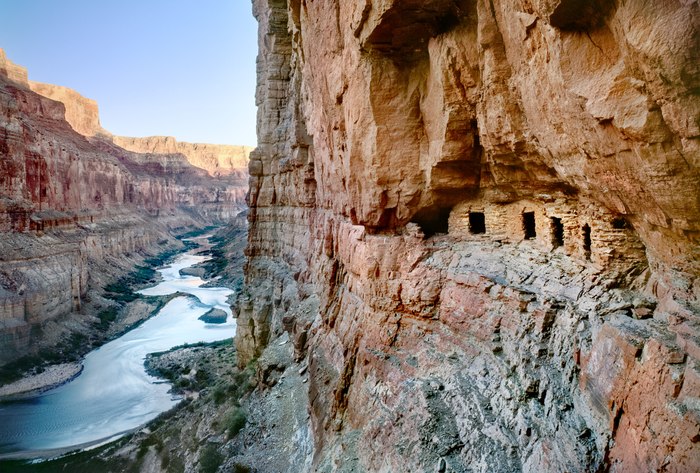Granaries are storehouses for safely preserving seeds, beans, and grains away from animals, insects, disease, and floods. Typically built from timber, stone, and clay, evidence of their construction goes back over 11,000 years, and they continue to be used worldwide today.
The Nankoweap Granaries were built around 1100 AD by members of the Ancestral Puebloan culture who cultivated food in a significantly different environment. Today, cold, blue water flows into the Grand Canyon from Lake Powell, resulting from the 1964 Glen Canyon Dam construction 68 miles upstream from this site. When the Puebloans made these granaries, the free-flowing Colorado River was warmer and red from carrying sediment. The Puebloans benefited from the nutrient-rich soil deposited along the riverbanks to grow crops. They stored corn and pumpkin seeds for periods of drought when food was scarce.
Constructed by stacking sandstone mortared with mud and straw, the shallow cave’s bedrock formed the floor, ceiling, and back wall, and flat sandstone slabs once sealed the front openings. A steep trail protected the granaries from enemies and floods 700 feet above the river. It is a half-mile hike from the broad and once-fertile delta of Nankoweap Creek (upstream from this location), where as many as 900 people cultivated the arable land. Looking downstream from the granaries at the river and the plateau’s rim above, this view has remained essentially unchanged in the past 900 years.
- James Baker

